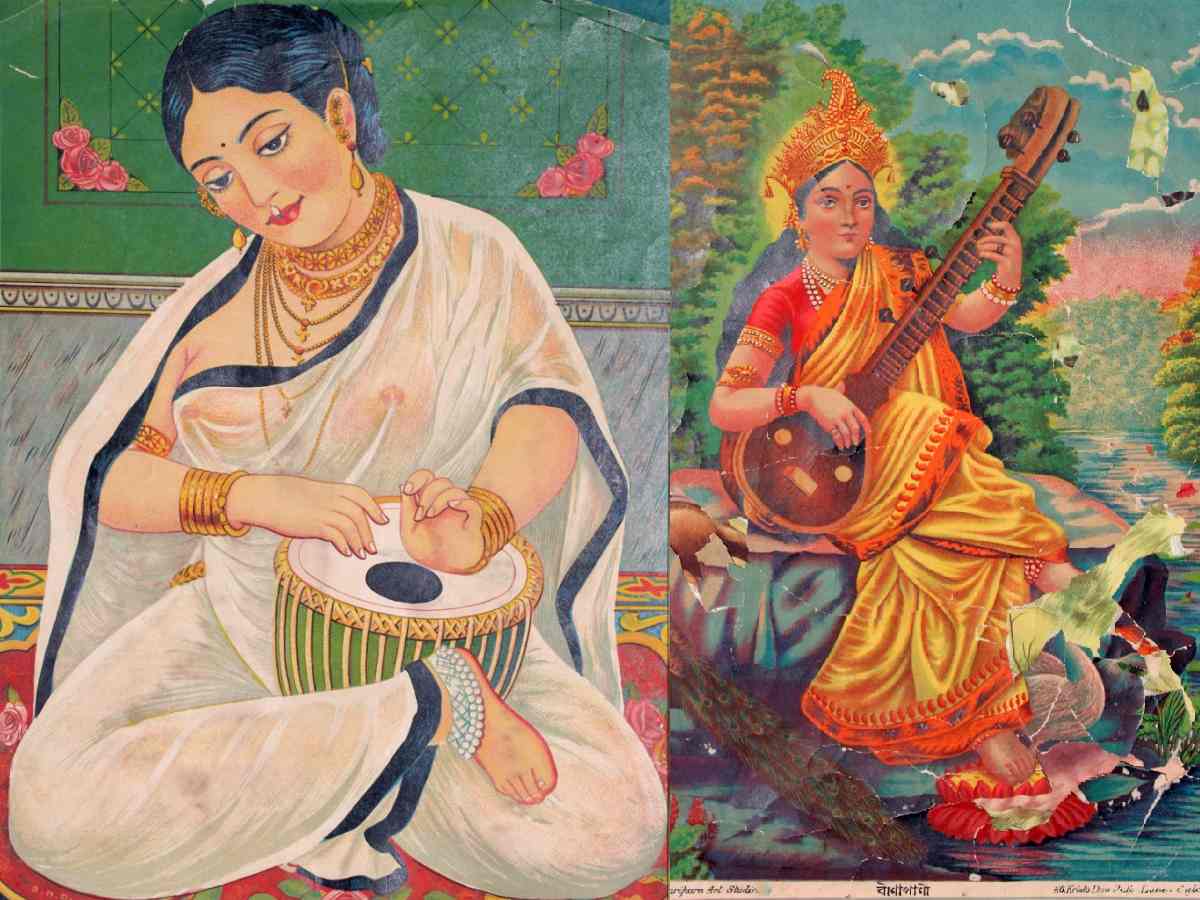
Located in Hauz Khas Village, the exhibition ‘Chitpur Chronicles: A Journey through Sacred Imagery’ offers a detailed look into Bengal’s spiritual and artistic heritage. Running from September 6 to 30 at Naivedyam, the display presents a collection of lithographs that highlight the intersection of faith, art, and technology. These works provide insight into Kolkata’s Chitpur area, which was influential in shaping religious iconography during Bengal’s cultural renaissance.
The exhibition features 25 lithographs from the late 19th and early 20th centuries, offering a glimpse into a period in India’s visual history when print technology merged with traditional religious art. Many of these lithographs, over a century old, originated from Kolkata’s Chitpur neighbourhood, a major hub for lithographic printing during that time.
Historical Significance of Chitpur Lithographs
Chitpur lithographs emerged in Kolkata in the late 1800s, during a time when the Indian Renaissance was transforming Bengal’s cultural and artistic landscape. Lithography, a printing process that allowed the mass production of images, made religious imagery more widely accessible than traditional hand-painted artwork. Studios like Chore Bagan Art Studio and Kansaripara Art Studio were key players in producing these prints.
Siddharth Tagore, founder of Management of Art Treasures of India and the owner of the collection, told Patriot, “Chitpur lithographs changed the way religious imagery was produced and consumed in Bengal. For the first time, people from all walks of life could own these images, creating a new connection between art and devotion.”
“The lithographs in this exhibition predominantly depict Hindu deities and mythological scenes, such as those of Abhimanyu, the goddess Saraswati, and Jagaddhatri. These prints serve as a window into how religion and art were intertwined in Bengal during this time, with artists balancing devotion and evolving technology,” Tagore said.
One of the key features of these lithographs is the blend of traditional Indian styles with European artistic techniques, reflecting the period’s growing cultural exchange. Vibrant colours and precise details characterise these works, which adhered to religious iconography while embracing modern methods of production.
“The artists stayed true to religious traditions while adopting new technologies,” said Arjun Mehta, an art student who attended the exhibition. “You can see the same devotion in these prints as you would in hand-painted icons, but with the clarity and precision of lithography.”
Religious and Cultural Impact
Affordable and easily reproducible, the lithographs brought religious imagery into homes and temples across Bengal, fostering a new form of devotional practice. They also served as educational tools, illustrating stories and symbols from Hindu mythology for the masses.
“These lithographs likely played a huge role in people’s everyday worship. Seeing those in this setting helps you understand their importance in both religious and cultural life,” Neha Gupta, a visitor, said.
Decline and Rediscovery of Chitpur Lithographs
Over time, as newer technologies emerged, the demand for Chitpur lithographs declined, and they became rarer. Today, these lithographs are primarily found in private collections or museums, making exhibitions like ‘Chitpur Chronicles’ a rare opportunity for the public to view them.
Ravi Iyer, a historian visiting the exhibition, highlighted the significance of preserving these pieces: “These lithographs are a vital part of India’s cultural heritage. They capture a unique moment when art, religion, and technology come together. Preserving them helps keep that history alive for future generations.”
Emphasising that exhibitions such as ‘Chitpur Chronicles’ have broader significance, Tagore said, “These lithographs are a testament to a time when art was not only accessible but also deeply interwoven with daily life. Exhibitions like this play a crucial role in preserving that cultural heritage and introducing it to contemporary audiences.”
He added that the lithographs represent a period of profound change, offering insight into how people in the late 19th and early 20th centuries engaged with both their faith and the visual culture of the time.
“The exhibition provides an opportunity to delve into a lesser-known chapter of India’s artistic history,” Tagore said.
The case was registered on the complaint of Akbar, who alleged that the accused had…
The capital exceeded the PM10 standard on 285 days during the year, the Centre for…
The previous coldest January day in the past years was recorded on January 15, 2024,…
Ahead of her January 11 Delhi concert, legendary vocalist Begum Parveen Sultana reflects on her…
Sood said universities are no longer limited to academic instruction and are increasingly emerging as…
The accused has allegedly confessed his involvement and further investigation is underway to recover the…